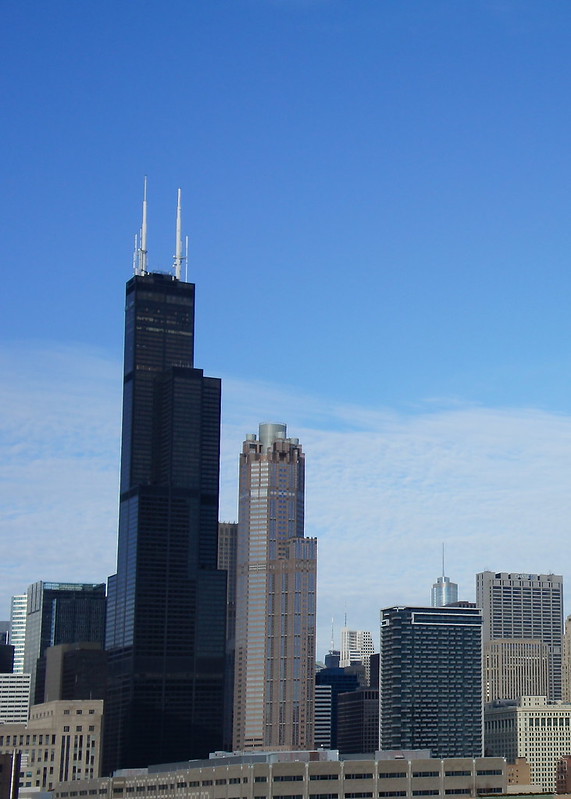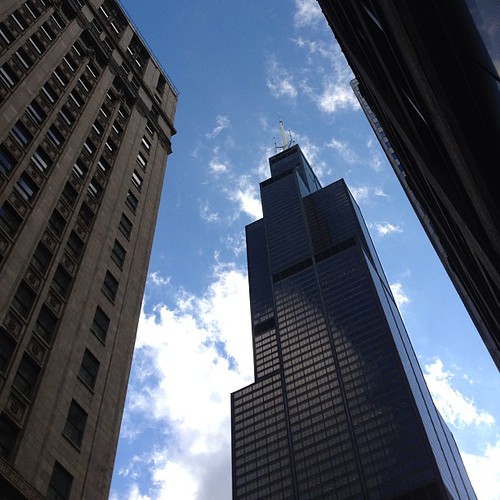
Structural engineer Fazlur Kahn, architect Bruce Graham and their partners at the firm of Skidmore, Owings and Merrill (SOM) are responsible for the groundbreaking design of what is still the tallest building in North America.

Its bundled tube construction was revolutionary. It consists of 9 tubes that are each seventy-five feet square. The tubes are then set back at the 50th, 66th and 90th floors leaving 2 tubes to rise to the building’s full height of 1454 feet. The setbacks provide lateral stiffness allowing the tower to resist the “Windy City’s” windy conditions and are also indicative of the original use of the building.
When Sears first occupied the building their merchandising department utilized the first 50 floors. The massive floors enabled employee interaction with limited elevator travel. The setback floors above were leased out and proved to be extremely profitable.
So, although now-a-days this beautifully sleek engineering wonder is more commonly known as the Willis Tower, in Chicago, "S" will always stand for Sears tower.
Who's been up in the observatory and looked down on the street like a roosting pigeon?

